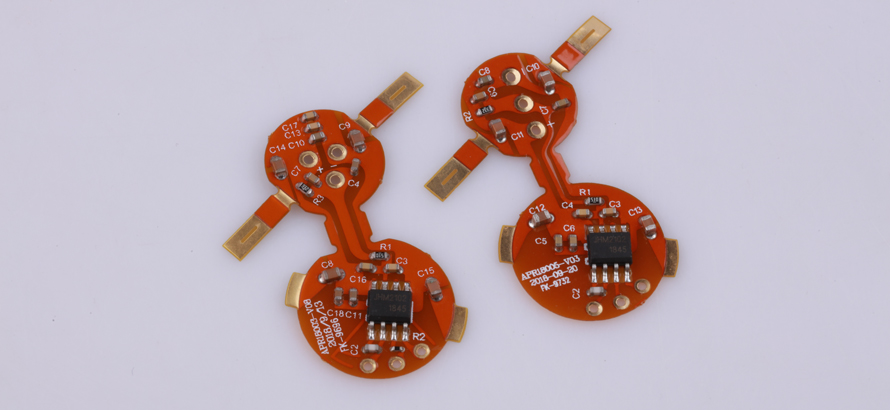Flexible Printed Circuit (FPC) is a high reliability and excellent flexible printed circuit board made of polyimide or polyester film. It has the characteristics of high wiring density, light weight, thin thickness and good flexibility. Today I will introduce you to four common flexible circuit boards.
1. Single-sided flexible board
lowest cost. When the electrical performance requirements are not high and single-sided wiring can be used, a single-sided flexible board should be used. This most common form is already used commercially, such as printer inkjet cartridges and computer memory. The single-sided flexible board has a layer of chemically etched conductive patterns, and the conductive pattern layer on the surface of the flexible insulating substrate is rolled copper foil. The insulating substrate for flexible assembly can be polyimide (Kapton), polyethylene terephthalate (PET), aramid fiber paper (Nomex) and polyvinyl chloride (PVC).
2. Double-sided flexible board
The double-sided FPC is a conductive pattern formed by etching on both sides of the base film. The metallized holes connect the patterns on both sides of the insulating material to form a conductive path, which satisfies the flexibility of design and use functions. Cover films protect single- and double-sided conductors and indicate the location of parts.
3. Multilayer flexible board
Multilayer flexible boards are three or more layers of single-sided FPC or double-sided flexible circuit boards laminated together, metallized holes are formed by drilling and electroplating, and conductive paths are formed between different layers. In this way, complex welding processes are not required. Although the number of conductive layers designed for this type of flexibility can be unlimited, to ensure ease of assembly, the interplay between assembly size, number of layers, and flexibility should be considered in the layout design.
4. Rigid-flexible combination type
Traditional rigid-flex boards are composed of rigid and flexible substrates selectively laminated together. The structure is compact, with metallized holes forming conductive connections. Factories should try to keep the number of layers as low as possible, considering reliability and price factors.
HDI Rigid-Flex Board: High Density Interconnect (HDI) rigid-flex printed circuit boards are high-end printed circuit board products. Its goal is to meet the needs of electronic products developing in the direction of miniaturization, high frequency, high speed and multi-function. The HDI rigid-flex composite board combines the advantages of the popular HDI board and the rigid-flex composite board, which promotes the development of high integration and high intelligence in the design and production of electronic systems, and has been widely used in aerospace, medical equipment, consumer and other high-end electronics in the product.
Share:

 English
English 中文
中文



